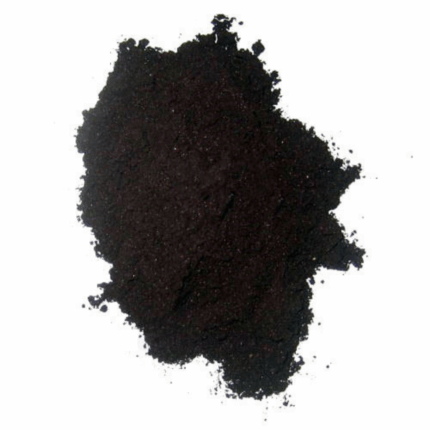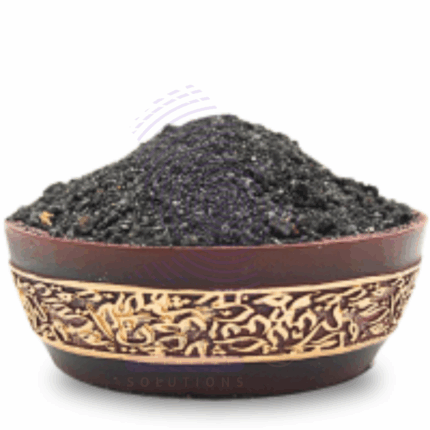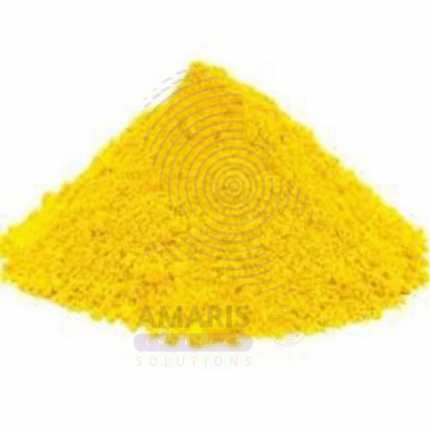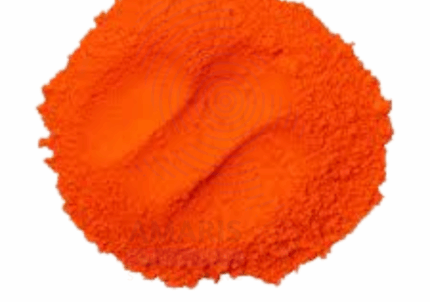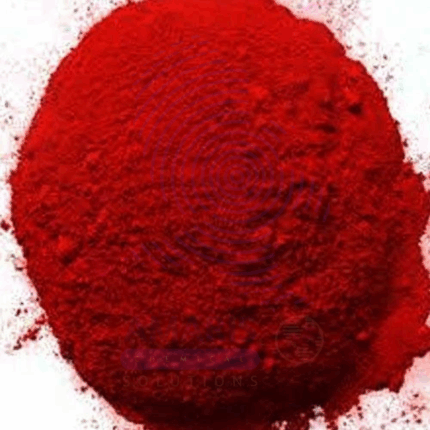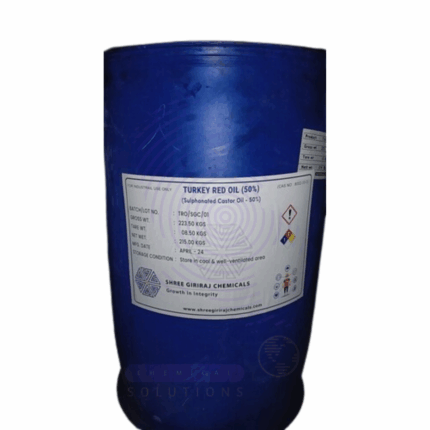Reactive Yellow HeR
Whatsapp Order
Reactive Yellow HeR is a high-exhaust, mono-functional reactive dye used predominantly in the textile industry for dyeing and printing cellulosic fibers like cotton, viscose, and their blends. This dye contains a reactive group that forms a covalent bond with hydroxyl groups in cellulose under alkaline conditions, ensuring excellent wash fastness and color retention. Reactive Yellow HeR is valued for its bright yellow hue, good solubility, and compatibility with continuous, semi-continuous, and batch dyeing processes.
Description
Table of Contents
Toggle
Reactive Yellow HeR
Primary Uses
- Textile Dyeing Industry
- Used extensively for dyeing cotton, viscose, modal, and other cellulosic fibers using exhaust and continuous dyeing methods.
- Suitable for yarn dyeing, fabric dyeing, and garment dyeing, especially where high wash and light fastness are required.
- Commonly applied in home textiles (e.g., bedsheets, towels, curtains), apparel, and industrial textiles.
- Ideal for use in reactive dye blends to produce customized shades for fashion or interior fabrics.
- Textile Printing
- Employed in screen and rotary printing on cellulose-based fabrics.
- Used to print multicolor patterns and solid tones in reactive printing pastes for high-definition, durable prints.
Secondary Uses
- Crafts & Artisan Dyeing
- Sometimes used in hand dyeing or artisanal textile production for vibrant and durable yellow shades.
- Education & Research
- Used in textile chemistry labs and dyeing technology courses for training and performance testing.
- Blended Fiber Processing
- Applied in dyeing cotton-polyester or cotton-lycra blends, with appropriate auxiliaries to manage dye affinity and fixation.
KEY PRODUCT FEATURES
1. Basic Identification Attributes
- Chemical Name (IUPAC): Varies (typically contains a mono-reactive vinyl sulfone or monochlorotriazine group)
- Common/Trade Name: Reactive Yellow HeR
- CAS Number: Proprietary/varies by manufacturer
- HS Code: 3204.16.00 (Reactive dyes)
- Synonyms: Yellow HE-R; Mono-reactive Yellow dye; High-Exhaust Yellow dye
2. Physical & Chemical Properties
- Physical State: Powder or granular form
- Color & Odor: Bright yellow; odorless or faint dye-like odor
- Solubility: Soluble in water
- pH Stability: Stable in alkaline dye baths (typically pH 10–11 for fixation)
- Heat Sensitivity: Stable under normal textile processing temperatures
3. Safety & Hazard Attributes
- GHS Classification: May cause eye and skin irritation; avoid inhalation of dust
- Toxicity: Low toxicity under recommended use; avoid ingestion or prolonged exposure
- Exposure Limits: Not established; follow general dye handling precautions
4. Storage & Handling Attributes
- Storage Conditions: Store in a cool, dry, well-ventilated area away from moisture and direct sunlight
- Container Type: Packed in moisture-proof HDPE drums, bags, or fiber cartons
- Shelf Life: Typically 12–24 months when stored properly
- Handling Precautions: Avoid creating dust; use appropriate PPE during weighing and mixing
5. Regulatory & Compliance Attributes
- Compliant with major textile safety standards (Oeko-Tex®, ZDHC MRSL, REACH)
- May be APEO-free and formaldehyde-free depending on supplier specification
- Often used in certified eco-friendly and low-impact dyeing processes
6. Environmental & Health Impact
- Biodegradability: Limited; dye may persist in effluent without treatment
- Ecotoxicity: Can be harmful to aquatic life if discharged untreated
- Bioaccumulation: Low potential
- Wastewater Treatment: Requires reactive dye removal techniques such as coagulation, ozonation, or adsorption
SAFETY HANDLING PRECAUTIONS
Safety Handling Precautions
- PPE Required: Gloves, goggles, dust mask when handling powder form
- Handling Guidelines: Avoid inhalation of dust and contact with eyes or skin; work in well-ventilated dye houses
- Storage Measures: Keep containers tightly sealed and stored in a dry environment at room temperature
First Aid Measures
- Inhalation: Move to fresh air; seek medical attention if respiratory symptoms occur
- Skin Contact: Wash with soap and water; seek medical attention if irritation persists
- Eye Contact: Rinse immediately with water for 15 minutes; consult a physician
- Ingestion: Rinse mouth with water; seek immediate medical help
Firefighting Measures
- Fire Hazards: May burn if exposed to high temperatures; not highly flammable
- Extinguishing Media: Use dry chemical, foam, CO₂, or water spray
- Special Precautions: Use protective equipment and breathing apparatus in case of fire
- Hazardous Combustion Products: Oxides of carbon, nitrogen, and sulfur
Related products
Black Five 5 Pigment
Black Five 5 Pigment is a high-quality synthetic pigment known for its intense, deep black coloration and excellent opacity. It is widely used in various industrial applications due to its outstanding color strength, stability, and resistance to heat, light, and chemicals. This pigment offers superior dispersibility in multiple media, making it ideal for use in paints, coatings, plastics, inks, and rubber products.
Black Five (5) Pigment delivers rich black tones with excellent durability, providing long-lasting color performance in demanding environments. Its non-toxic nature and compatibility with a wide range of formulations make it a preferred choice for both industrial and artistic applications.
Black Jawi
Black Jawi is a natural, mineral-rich volcanic sand or powder, traditionally harvested from volcanic regions. Its high content of silica, iron oxides, magnesium, and trace minerals makes it a versatile material for agriculture, construction, cosmetics, and industrial applications. Packaged in 30kg bulk quantities, it is ideal for large-scale projects requiring durability, soil enhancement, or therapeutic properties.
Black Pigment Dye
Black Pigment Dye is a synthetic pigment dispersion formulated to provide intense, deep black coloration with excellent stability and uniformity. It is commonly used in various industries for coloring applications requiring high opacity and fastness. The pigment exhibits excellent resistance to light, heat, and chemicals, ensuring durability in end-use products. It is highly compatible with multiple substrates including textiles, plastics, coatings, and inks, making it versatile for industrial and specialty applications.
Bright Yellow Dye
Bright Yellow Dye is a high-strength, water-soluble synthetic dye solution designed for vibrant red coloration across various industrial and consumer products. With 20% active dye content, it offers excellent color intensity, easy dispersibility, and compatibility with a wide range of aqueous systems. This versatile dye is widely used in textiles, paper, personal care products, and household cleaning formulations.
Disperse Black
Disperse Black is a synthetic dye belonging to the class of disperse dyes, primarily used for dyeing hydrophobic fibers such as polyester, nylon, acetate, and other synthetic textiles. It is characterized by its fine particle size, high tinctorial strength, excellent fastness properties (wash, light, and rubbing), and ability to produce deep, uniform black shades. Disperse Black dyes are water-insoluble and applied in aqueous dispersion form during high-temperature dyeing processes. These dyes are favored in the textile industry for their vibrant colors and durability.
Pigment Orange
Pigment Orange is a concentrated dispersion of synthetic orange pigment particles in a suitable carrier, designed to deliver bright, vivid orange coloration. It offers excellent stability, heat resistance, and chemical inertness, making it suitable for diverse industrial applications including paints, plastics, inks, and coatings. This pigment ensures consistent color strength and durability across a variety of substrates.
Tomato Red Dye
Tomato Red Dye is a synthetic azo dye prized for its vibrant, bright red coloration and excellent water solubility. It delivers consistent, vivid red shades that are stable under a variety of environmental conditions, including exposure to light, heat, and washing. This dye is extensively used across multiple industries including food and beverage, cosmetics, pharmaceuticals, and textiles. In food applications, it enhances the visual appeal of products such as beverages, confectionery, sauces, and baked goods. Its compatibility with different formulation types and regulatory approvals make it a reliable choice for cosmetic products like lipsticks, blushes, and nail polishes, as well as pharmaceutical tablets and syrups for identification and aesthetic purposes. The dye's superior performance, combined with strict adherence to safety and quality standards, ensures that it meets the requirements of manufacturers and regulatory bodies worldwide.
Turkey Red Oil (Sulphated Castor Oil)
Turkey Red Oil (Sulphated Castor Oil), also known as Sulphated Castor Oil, is a water-soluble derivative of castor oil produced by the sulfonation of castor oil. It appears as a viscous, amber to dark brown liquid with excellent emulsifying, detergent, and wetting properties. Turkey Red Oil is widely used as a natural surfactant and emulsifier in various industrial and personal care applications. It is known for its biodegradability, mildness, and ability to stabilize oil-in-water emulsions. Traditionally used in textile processing as a softener and lubricant, it now finds broad usage in cosmetics, detergents, leather processing, and cleaning products due to its unique functional attributes.


 Preservatives(food)
Preservatives(food) Flavor Enhancers
Flavor Enhancers Acidulants
Acidulants Sweeteners
Sweeteners Antioxidants
Antioxidants Colorants(food)
Colorants(food) Nutraceutical Ingredients (food)
Nutraceutical Ingredients (food) Nutrient Supplements
Nutrient Supplements Emulsifiers
Emulsifiers
 Collectors
Collectors Dust Suppressants
Dust Suppressants Explosives and Blasting Agents
Explosives and Blasting Agents Flocculants and Coagulants
Flocculants and Coagulants Frothers
Frothers Leaching Agents
Leaching Agents pH Modifiers
pH Modifiers Precious Metal Extraction Agents
Precious Metal Extraction Agents
 Antioxidants(plastic)
Antioxidants(plastic) Colorants (Pigments, Dyes)
Colorants (Pigments, Dyes) Fillers and Reinforcements
Fillers and Reinforcements Flame Retardants
Flame Retardants Monomers
Monomers Plasticizers
Plasticizers Polymerization Initiators
Polymerization Initiators Stabilizers (UV, Heat)
Stabilizers (UV, Heat)
 Antifoaming Agents
Antifoaming Agents Chelating Agents
Chelating Agents Coagulants and Flocculants
Coagulants and Flocculants Corrosion Inhibitors
Corrosion Inhibitors Disinfectants and Biocides
Disinfectants and Biocides Oxidizing Agents
Oxidizing Agents pH Adjusters
pH Adjusters Scale Inhibitors( water)
Scale Inhibitors( water)
 Antioxidants(cosmetic)
Antioxidants(cosmetic) Emollients
Emollients Fragrances and Essential Oils
Fragrances and Essential Oils Humectants
Humectants Preservatives
Preservatives Surfactants(cosmetic)
Surfactants(cosmetic) Thickeners
Thickeners UV Filters
UV Filters
 Fertilizers
Fertilizers Soil Conditioners
Soil Conditioners Plant Growth Regulators
Plant Growth Regulators Animal Feed Additives
Animal Feed Additives Biostimulants
Biostimulants Pesticides (Herbicides, Insecticides, Fungicides)
Pesticides (Herbicides, Insecticides, Fungicides)
 Active Pharmaceutical Ingredients (APIs)
Active Pharmaceutical Ingredients (APIs) Excipients
Excipients Solvents(pharmaceutical)
Solvents(pharmaceutical) Antibiotics
Antibiotics Antiseptics and Disinfectants
Antiseptics and Disinfectants Vaccine Adjuvants
Vaccine Adjuvants Nutraceutical Ingredients (pharmaceutical)
Nutraceutical Ingredients (pharmaceutical) Analgesics & Antipyretics
Analgesics & Antipyretics
 Analytical Reagents
Analytical Reagents Solvents(lab)
Solvents(lab) Chromatography Chemicals
Chromatography Chemicals Spectroscopy Reagents
Spectroscopy Reagents microbiology-and-cell-culture-reagents
microbiology-and-cell-culture-reagents Molecular Biology Reagents
Molecular Biology Reagents Biochemical Reagents
Biochemical Reagents Inorganic and Organic Standards
Inorganic and Organic Standards Laboratory Safety Chemicals
Laboratory Safety Chemicals Specialty Laboratory Chemicals(Special Laboratory Equipment)
Specialty Laboratory Chemicals(Special Laboratory Equipment)
 Demulsifiers
Demulsifiers Hydraulic Fracturing Fluids
Hydraulic Fracturing Fluids Scale Inhibitors(oil)
Scale Inhibitors(oil) Surfactants(oil)
Surfactants(oil) Drilling Fluids
Drilling Fluids
 Dyes and Pigments
Dyes and Pigments Bleaching Agents
Bleaching Agents Softening Agents
Softening Agents Finishing Agents
Finishing Agents Antistatic Agents
Antistatic Agents
 Admixtures
Admixtures Waterproofing Agents
Waterproofing Agents Sealants and Adhesives
Sealants and Adhesives Curing Compounds
Curing Compounds Concrete Repair Chemicals
Concrete Repair Chemicals Anti-Corrosion Coatings
Anti-Corrosion Coatings
 Surfactants(cleaning)
Surfactants(cleaning) Builders
Builders Enzymes
Enzymes Solvents (Cleaning)
Solvents (Cleaning) Fragrances
Fragrances
 Electronic Chemicals
Electronic Chemicals Catalysts
Catalysts Lubricants
Lubricants Photographic Chemicals
Photographic Chemicals Refrigerants
Refrigerants Automotive chemicals
Automotive chemicals Pyrotechnic Chemicals
Pyrotechnic Chemicals
 Biodegradable Surfactants
Biodegradable Surfactants Bio-based Solvents
Bio-based Solvents Renewable Polymers
Renewable Polymers Carbon Capture Chemicals
Carbon Capture Chemicals Wastewater Treatment Chemicals
Wastewater Treatment Chemicals
 Pigments
Pigments Solvents(paint)
Solvents(paint) Specialty Coatings
Specialty Coatings Binders/Resins
Binders/Resins Additives
Additives Driers
Driers Anti-Corrosion Agents
Anti-Corrosion Agents Functional Coatings
Functional Coatings Application-Specific Coatings
Application-Specific Coatings
 Fresh Herbs
Fresh Herbs Ground Spices
Ground Spices Whole Spices
Whole Spices Spice Blends
Spice Blends Dried Herbs
Dried Herbs
 Leavening Agents
Leavening Agents Dough Conditioners
Dough Conditioners Flour Treatments
Flour Treatments Fat Replacers
Fat Replacers Decoratives
Decoratives Preservatives(baking)
Preservatives(baking)
 Plasticizers & Softeners
Plasticizers & Softeners Reinforcing Agents
Reinforcing Agents Adhesion Promoters
Adhesion Promoters Vulcanizing Agents
Vulcanizing Agents Antidegradants
Antidegradants Blowing Agents
Blowing Agents Fillers & Extenders
Fillers & Extenders Accelerators & Retarders
Accelerators & Retarders



